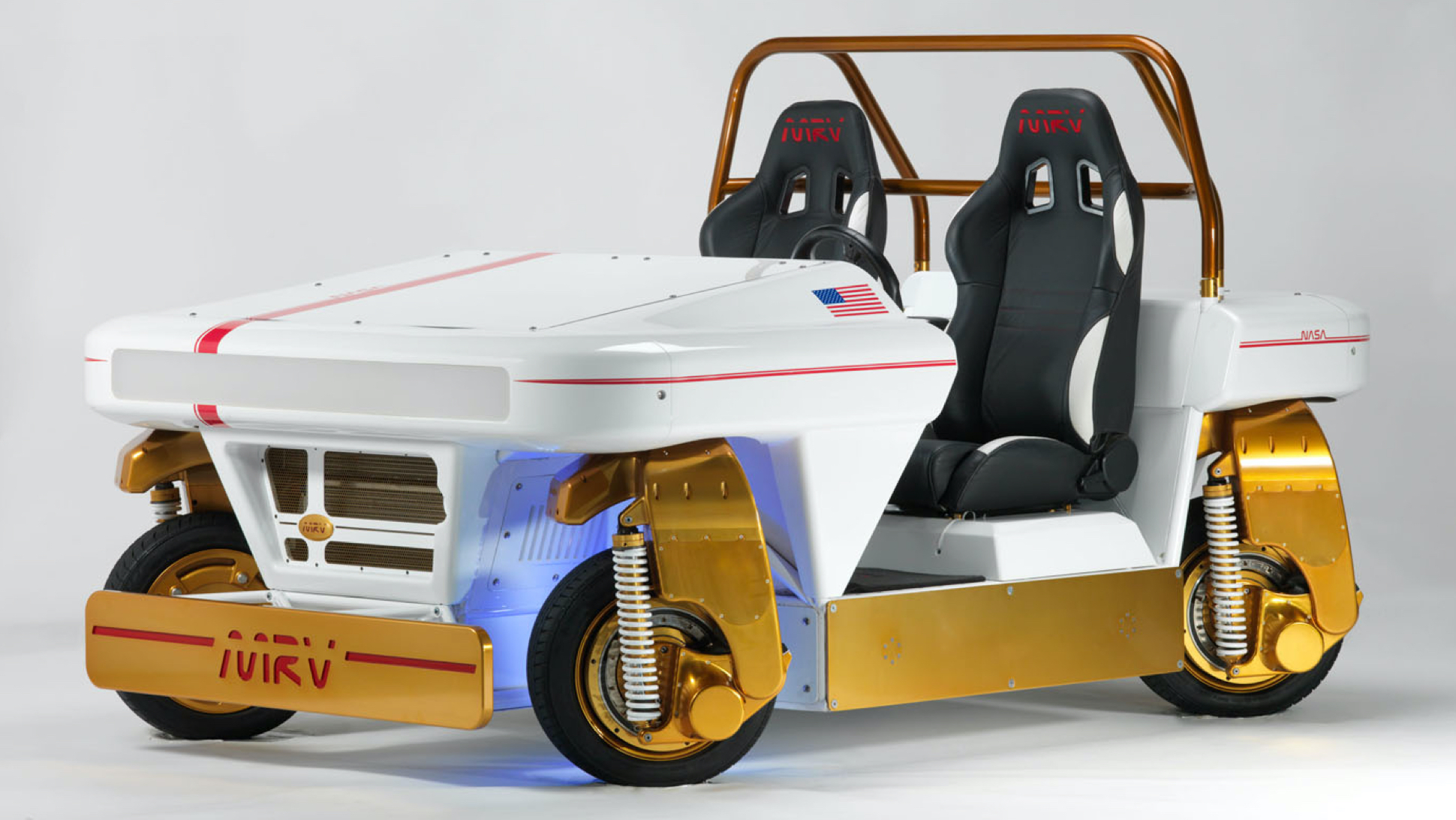

We’re all oohing and aahing at the 2022 GMC Hummer’s trick four-wheel steering system tonight, but did you know that this wasn’t the first General Motors-developed electric vehicle to have wheels that turn sideways?
NASA and GM partnered up to build the Modular Robotic Vehicle, or MRV for short. The MRV’s turning capabilities were even more extreme than the Hummer’s, as its four independently controlled wheels could each move 180 degrees. The entire car couldn’t just travel diagonally—it could straight up move sideways in a way that would put all of Formula Drift to shame.

The MRV was unveiled half a decade before the Hummer in 2015, but it had similar goals as the Hummer’s CrabWalk feature for NASA. The MRV’s weird wheel design could be adapted for future astronaut rovers destined for the moon or Mars, and the ability to turn wheels for sideways or diagonal travel could help such a rover navigate rocky, unfamiliar terrain.
Yet as you can see, the MRV is no off-roader. When I first saw the MRV at the Johnson Space Center for a Jalopnik feature in 2018, it was sitting on some very corded Toyo Proxes R888 tires, which are a favorite among track rats as well as whoever was apparently taking the MRV out for joyrides. The car parks its wheels turned out diagonally towards each corner, which prevents it from rolling it around.
According to the Planetary Society, NASA wanted to work on a next-generation rover, but GM was more interested in a city car concept, so the MRV was the compromise.
“You have these two extremes,” NASA robotics engineer Lucien Junkin told the Planetary Society. “What’s the cheapest between the two? A city car. How about we build a city car with the technologies that want for the next-generation rover: battery technology, wheel module coolant, pump motors, things like that?”

What GM got out of the partnership was a car with roughly the footprint of a Smart ForTwo that could turn all of its wheels 90 degrees and roll in sideways into tight parking spots. It could travel diagonally like the Hummer but also spin around in a circle, smearing shame on even the tightest turning radius.
The open-top, two-seat MRV was all-electric, powered by lithium-ion batteries and completely drive-by-wire, eliminating the need for any mechanical linkages between the driver inputs and the drivetrain. You can drive it like a regular car using the steering wheel and pedals, or use the joystick to turn the wheels around. It has a top speed of between 40 and 50 mph, according to NASA robotics engineer Justin Ridley, and can even be controlled completely remotely like a giant R/C car.
The MRV also one-ups the Hummer in another way: with one extra motor. Each wheel has a propulsion motor inside mounted on its hub, next to a brake motor. A redundant steering motor fits above it making each corner assembly (which NASA calls an e-corner) rather self-contained. Redundant systems were a big deal for NASA’s part in this design exercise, given that the need for back-ups in case something fails in space. The motors may look small, but they’re capable of delivering 190 foot-pounds of torque, and the car itself only weighs 2,000 lbs.

The only catch is that it costs a lot more than the new $112,595 Hummer. The MRV took about a year’s time and $2.5 million to develop. You can license the technology from the MRV through the NASA Technology Transfer Program, however, but no price is listed through that. If you have to ask, you should probably expense it. (Wheeeee, new office toy!)
Got a tip? Send us a note: tips@thedrive.com